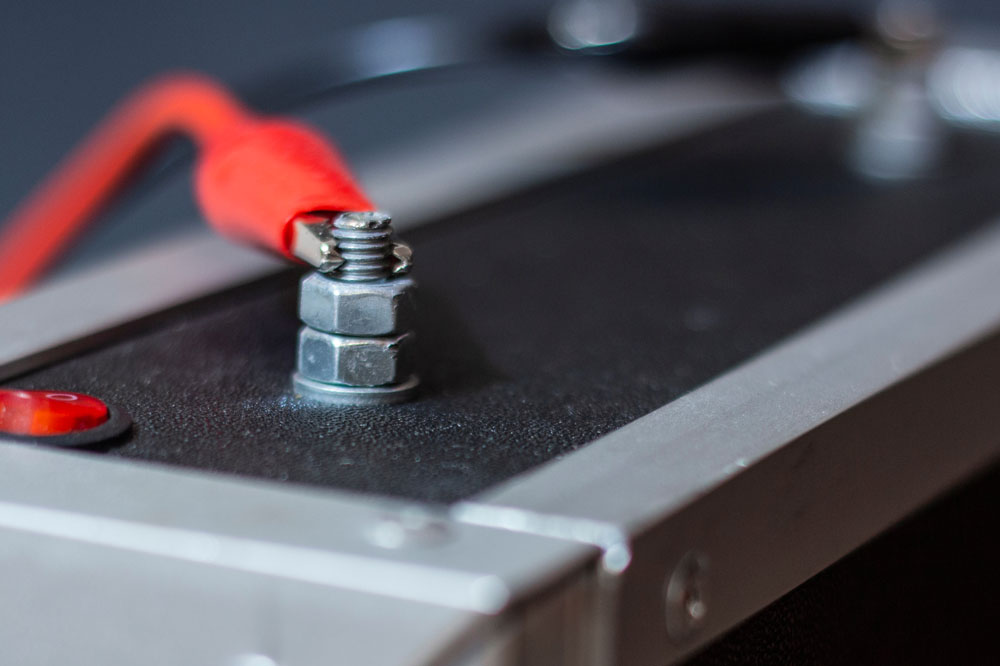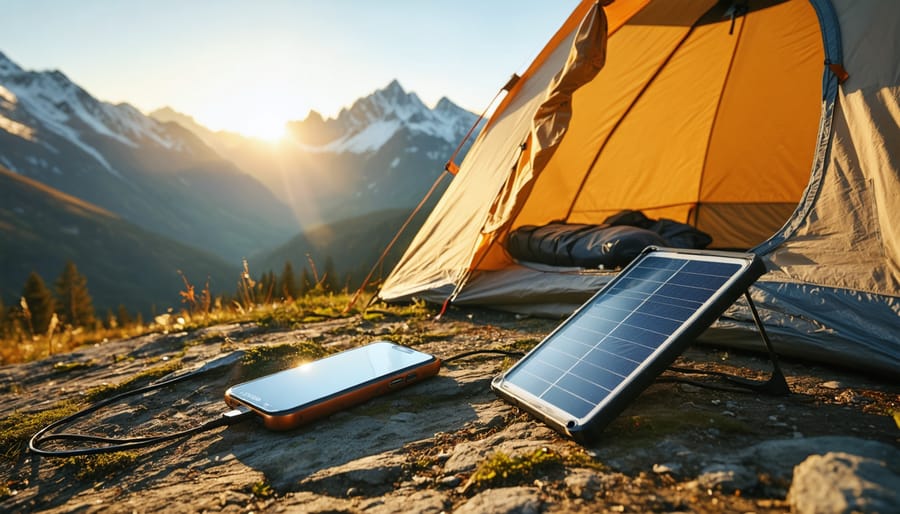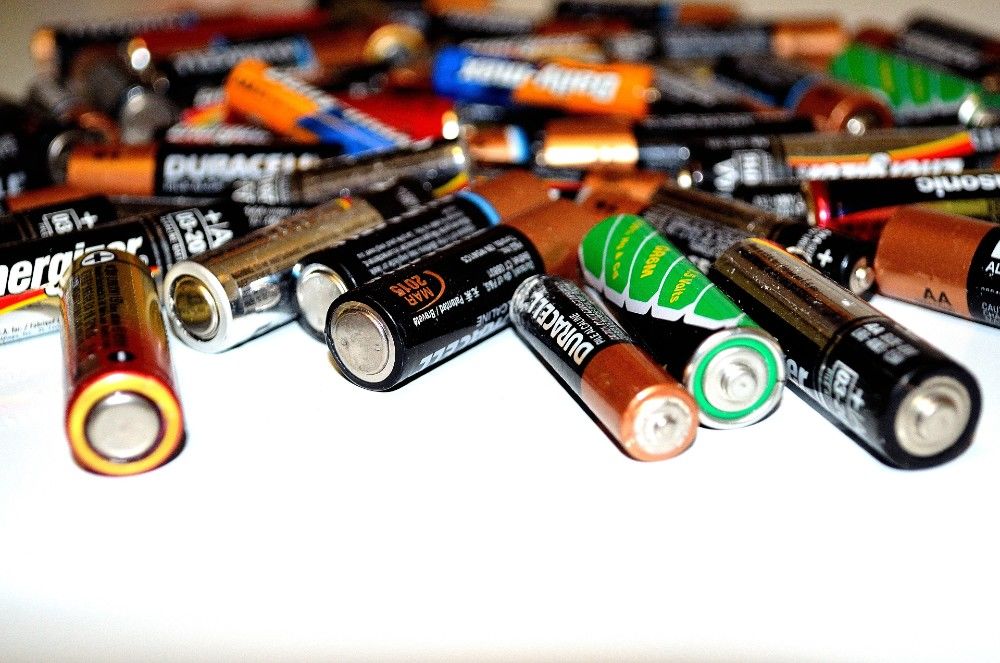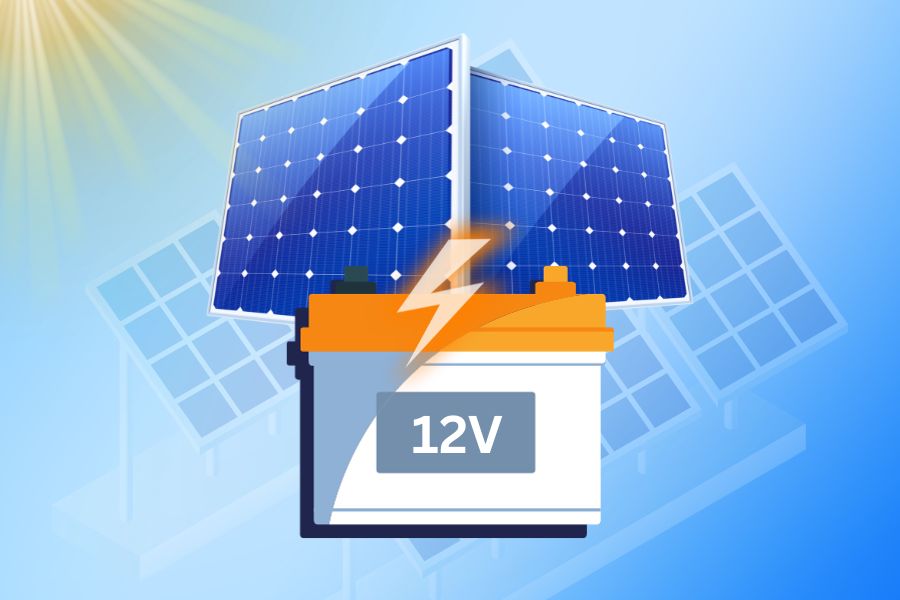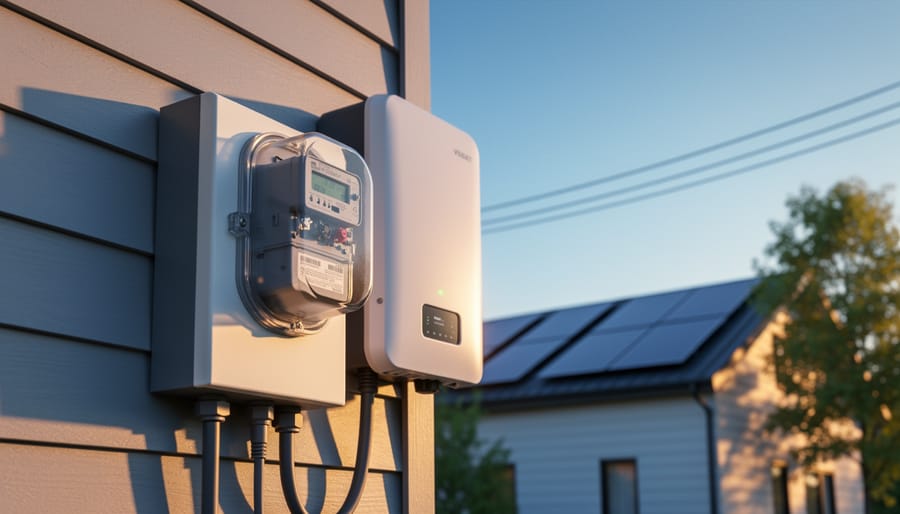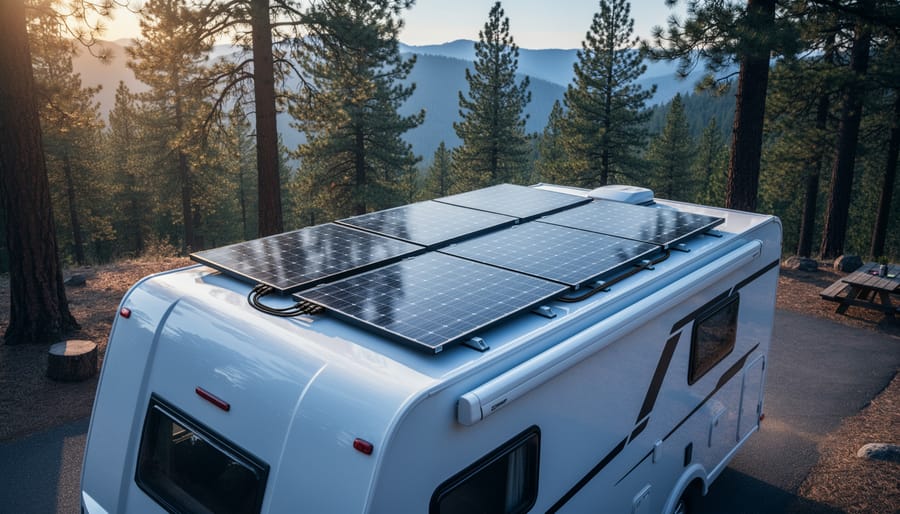Do Solar Power Banks Work?
Updated:

Solar power banks are able to effectively collect, store, and deliver solar energy to charge electronics on the go. But do solar power banks work and truly live up to the promise of unlimited, eco-friendly power?
While they do have limitations, solar power banks can be a versatile solution when you need portable renewable power.
In this article, we’ll examine how well solar power banks are able to charge devices and whether they live up to their promise.
So, let’s get started.
How Do Solar Power Banks Utilize the Sun’s Energy?
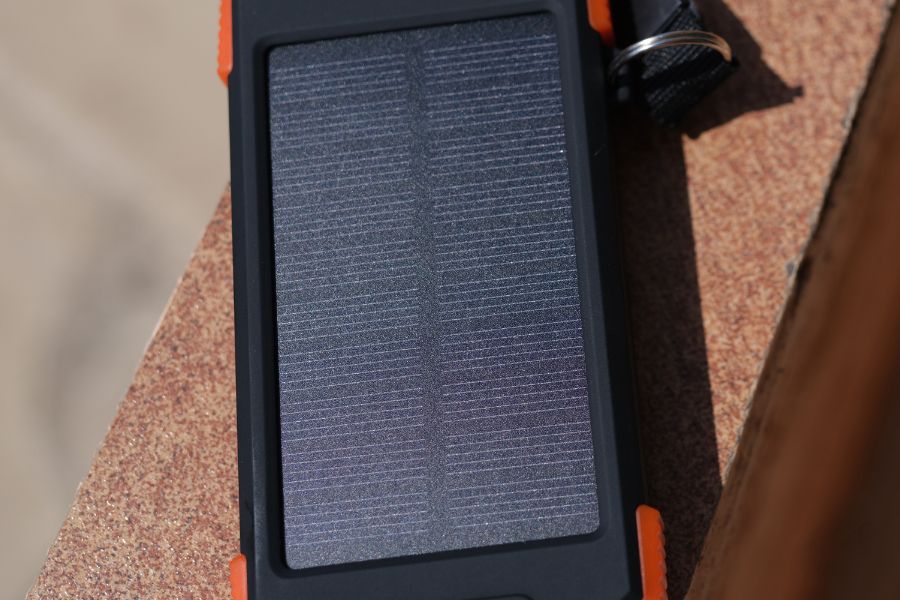
Solar power banks utilize solar energy to collect energy from sunlight and store it in built-in batteries. This stored solar electricity is then used for charging and powering various electronic devices when needed, even away from other power sources.
Unlike solar chargers, which only charge in direct sunlight, solar power banks store generated energy for later use, making them very useful for outdoor activities, travel, emergencies, and other off-grid situations.
Performance of Solar Power Banks: Key Factors You Should Know
To evaluate the effectiveness of a solar power bank, it’s crucial to know the factors influencing its power output and overall efficiency. Below are the critical elements:
Solar Cell and Panel Characteristics
- Quality: High-grade solar cells like monocrystalline and polycrystalline silicon are more efficient in converting sunlight to electricity.
- Size and Count: Larger and more numerous solar cells capture more sunlight, resulting in higher energy output. Some models even feature foldable multi-panel arrays for increased efficiency.
Battery and Charging Specs
- Battery Capacity: Measured in milliamp-hours (mAh) or watt-hours (Wh), higher capacity allows for more stored energy.
- Charging Ports: Multiple USB ports enable you to charge several devices simultaneously, optimizing the use of stored solar energy.
Environmental Factors
- Sunlight Quality: Direct, unfiltered sunlight significantly boosts energy production. Conversely, overcast skies or shade will reduce efficiency.
- Temperature: Solar cells are more efficient in cooler conditions. Excessive heat, especially over 90°F, can reduce energy output.
Device Compatibility
- Power Requirements: Understanding the wattage needs of your devices helps set expectations. A solar power bank may efficiently charge a 5W smartphone but struggle with a 60W laptop.
Comparing Solar and Traditional Power Banks

Let’s explore the key differences between solar power banks and traditional ones.
Energy Source
Traditional power banks must be plugged into a wall outlet to charge their batteries. Once that’s done, you can use them to charge your devices wherever you go.
On the other hand, solar power banks use solar panels to collect energy from the sun. This means they can keep topping up their batteries as long as there’s good sunlight.
Environmental Impact
Solar power banks use renewable energy from the sun, which doesn’t harm the planet.
Traditional power banks usually rely on electricity from the grid, which is often made by burning fossil fuels.
Size and Portability
Solar power banks are generally heavier and larger because they have solar panels.
Traditional power banks are often smaller and easier to carry because they don’t need these panels.
Speed of Charging
Wall chargers are the quickest way to power up your devices. It often takes 1 to 3 hours to fully charge phones and tablets.
Solar power banks take more time, usually 2 to 4 times longer, due to their lower wattage.
Number of Charges
With wall chargers, you can charge your devices as many times as you like, as long as you have access to an electrical outlet.
Solar power banks have a limit; they can only charge as much as their internal battery allows. Once that’s used up, you’ll need more sun to recharge the power bank.
Usage Scenarios
Traditional power banks and wall chargers are great for everyday use when you’re near outlets.
Solar power banks are your best bet when you’re outdoors, away from any electrical source, like when you’re camping or during a power outage.
What Can You Charge With a Solar Power Bank?
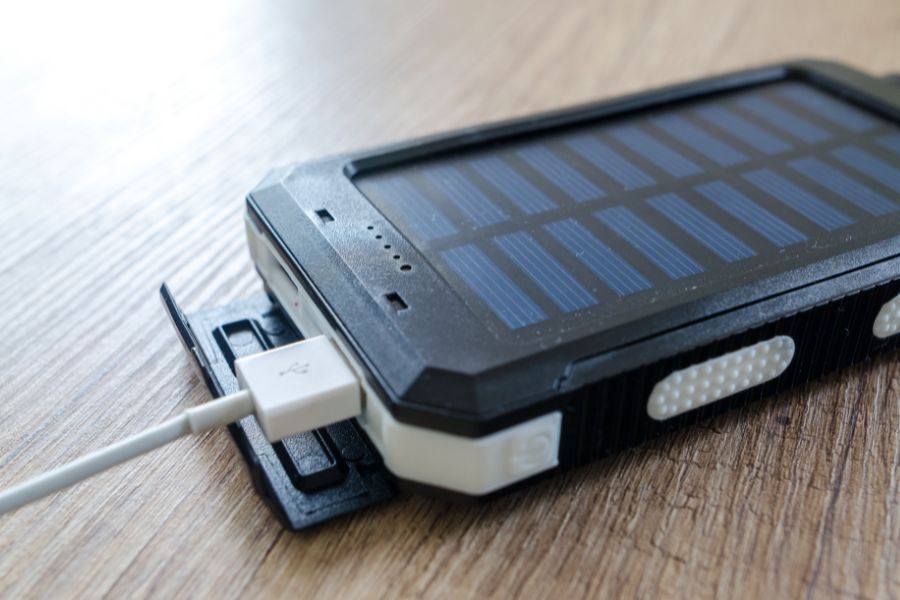
With their internal batteries and USB ports, solar power banks can charge any small USB-powered devices and electronics including:
Smartphones
- Tablets
- Digital cameras
- Action cameras like GoPros
- Bluetooth headphones and speakers
- E-readers
- Handheld GPS devices
- Flashlights and headlamps
- Smartwatches
For small form-factor electronics that charge via USB cable, power banks are very handy portable chargers. Just ensure your device is compatible with the solar bank’s output ports and voltage.
Higher-capacity portable power banks can additionally charge larger devices like:
- Laptops
- Nebulizers
- CPAP machines
- Fans
- Radio equipment
Are Solar Power Banks Worth the Higher Cost?
Solar power banks typically cost quite a bit more than same-capacity traditional power banks – often 2-3 times more. This premium pricing is mainly due to the included solar panel components.
However, for certain use cases and lifestyles, paying extra for a solar-charged power bank can absolutely be worth the investment:
Off-Grid Travel
When hiking, camping, or travelling in rural areas, solar power lets you charge devices anywhere without access to electrical outlets.
Emergency Preparedness
During power grid failures, solar banks provide backup electricity to run phones, lights, and radios when you need them most.
Energy Conservation
Reducing reliance on coal-powered electric grids for charging helps conserve fossil fuels and reduces pollution.
Renewable Energy Lifestyle
For eco-conscious consumers wanting to embrace a more sustainable living, solar power banks align with their values.
While the higher upfront cost can seem hard to justify for casual everyday charging needs, for certain situations solar capabilities make power banks worth the extra money.
What Are the Downsides and Limitations?
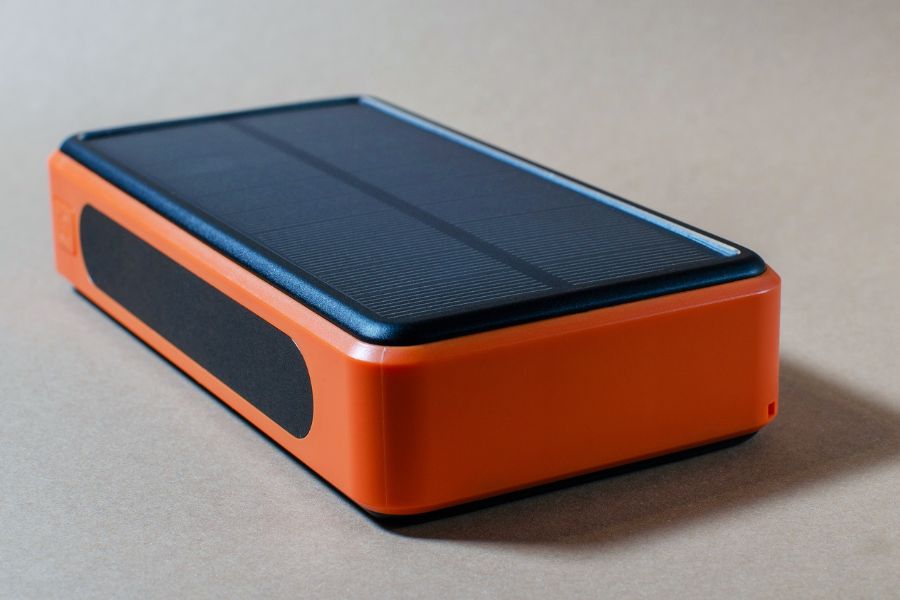
Despite their usefulness in many scenarios, solar power banks do have some key limitations to be aware of:
- Slow Charging: While solar bank technology improves, solar cell charging is typically much slower than wall outlets. Fully charging from empty can take multiple hours in direct sunlight. Supplemental electric charging is recommended when possible.
- Limited Capacity: Even large solar banks have finite battery capacities that limit their ability to charge high-powered devices multiple times without sunlight.
- Weather Dependence: Rain, clouds, storms, and nighttime impact charging capabilities since sunlight powers recharging. Hybrid electric+solar input models help mitigate this.
- Heat Impact: As ambient temperatures rise, solar cell efficiency tends to drop, potentially slowing charging. Keep panels cooler when possible.
- Size and Weight: Solar components contribute to the overall size and weight. Look for compact, lightweight designs if portability is important.
- Upfront Cost: The initial purchase price is significantly higher than a traditional power bank or wall charger. The energy savings over time help offset this.
Do Solar Power Banks Suit Your Lifestyle?
Solar-charged power banks can be extremely useful for certain lifestyles and situations. Ask yourself these questions:
- Do you regularly go camping or hike where power outlets are unavailable?
- Does your work or travel take you off-grid regularly?
- Do you want to reduce reliance on fossil fuel-derived electricity?
- Is emergency preparedness in case of power outages important to you?
- Are you looking for a more eco-friendly charging solution?
If you answered yes to any of the above, a solar power bank may provide the perfect portable renewable energy source for your needs.
For those whose charging needs center around in-home use, casual travel, or a daily work commute, traditional power banks and wall charging are likely sufficient. But frequent off-grid adventures make solar capabilities worthwhile.
Evaluate your own habits, needs, and values to determine if a solar power bank’s benefits outweigh the higher costs and limitations of your lifestyle. They give you the flexibility to charge smart devices using only the sun. For many users, that freedom provides great value.
FAQs
How Do Most Solar Power Banks Perform in Varying Weather Conditions?
Most solar power banks come with protective features like water-resistant or dust-resistant casing, making them suitable for outdoor use.
However, the lifespan and charge retention could be affected by prolonged exposure to harsh conditions.
What Is the Efficiency Rate of Solar Charging Compared to Traditional Charging Methods?
Solar charging efficiency is not just about speed; it’s also about energy conversion.
The best solar power banks can have a solar-to-electric conversion rate of up to 24%, which is significant, although not as consistent as traditional methods.
Can I Store Energy in a Solar Power Bank and Use It Much Later, or Is There a Time Limit?
You can store energy in a solar power bank for later use, but be aware that some batteries experience a gradual loss of charge when not used for an extended period.
It’s advisable to periodically top up the charge to maintain optimal performance


